Katyń: More than a Museum
For more than a decade now Warsaw has been turning heads collecting ticket stubs for some of its many magnificent museums. Specifically the award-winning Warsaw Rising Museum, and the POLIN - The Museum of the History of Polish Jews, with its stunning architecture and hi-tech presentations are both certainly high on the "to do" list of most visitors to the city. With their international reputations it's probably fair to say that many people will be aware of these important museums before even setting foot in Warsaw. It's also worth noting that many of the older and well established museums, including the National Museum, the Ethnographic Museum and Zachęta National Gallery of Art, have all recently undergone major renovations in order to boot them up the backside into the 21st century. Finding a permanent home for the vast collection of material related to the Katyń Massacres, which was one of the most tragic episodes in Polish history, proved difficult but well worth the wait.
In Cold Blood
The history of the Katyń Massacres is a complex and disturbing story regarding the systematic executions of over 22,000 Polish Nationals interned at various transit camps and prisons located in the western part of the USSR after the outbreak of WWII. Although generally referred to as the Katyń Massacres, the name was originally linked to the discovery of the first mass grave which was discovered by the German army in the depths of the Katyń forest near present day Smoleńsk, Russia. This execution site and mass grave contained the bodies of around 4,500 Polish Nationals, the majority of whom were officer class military personnel and the remainder were members of the Polish intelligentsia, deemed to be 'Enemies of the State'. The executions at Katyń took place between April and May 1940 with each victim being dispatched by a single shot to the back of the neck.
To this day, the graves of many thousands of victims remain undiscovered. Controversy and accusations raged for the next 50 years with the Soviet Union placing the blame firmly on the Nazis and vice-versa. It was not until the 1990's that the Soviet Union, later the Russian Federation, finally admitted to the atrocities. Documents revealed that the head of the NKVD (the Soviet Secret Police), Lavrentiy Beria's proposal to execute the prisoners had been passed by the Soviet Politburo and signed by Stalin himself. In November 2010, the Russian State Duma approved a declaration blaming Stalin and other Soviet officials for having personally ordered the massacre.
Poland's relentless search for the truth about the massacres not only stands as a testament to giving clarity to history but also helped to give resolution to many thousands of families affected by the atrocities as well as decades of post-Katyń deceit and cover-ups.
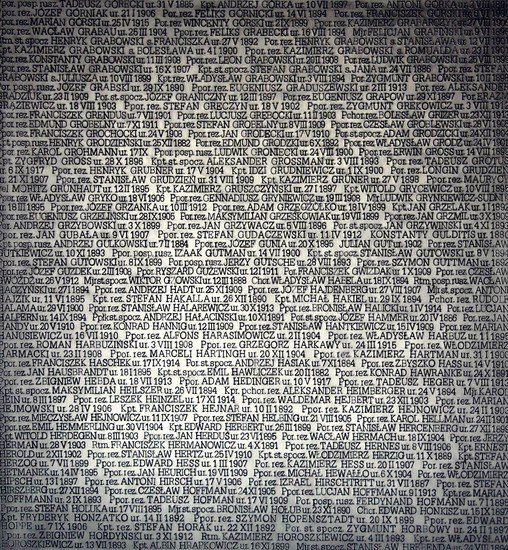
A Fortress for a Forest
The Katyń Museum previously existed in a different incarnation and was housed in another army owned building at the Czerniaków Fort in the Sadyba part of the city. In 2010 a decision was taken to move it to a new location and give the whole project a new and exciting lease on life. The Museum's new home is now in the grounds of the stunning Warsaw Citadel, an imposing brick fortress which was built by order of Tsar Nicholas I after the failed uprising of 1830 as a base for Russian garrisons. While in the grounds of the Citadel you may also be interested in visiting the Polish Independence Museum - Pavilion X. Up until the end of WW1 this Czarist prison block was the most notorious on the site and its list of prisoners, many of whom were executed here, included the majority of Poland's most famous patriots and revolutionaries as they struggled for freedom from Imperialist rule.
The Citadel's enclosed fortifications cover an area of over 36 hectares (much of the terrain was used by the Polish Army until work began on creating the new site of the Polish Army Museum, due to open 2021), so the first problem is actually finding the museum itself. Even we had to do quite a bit of detective work in order to hit the spot! The easiest thing to do is jump on a number 18 tram from ul. Marszalkowska, in the city centre, and head directly to the Park Traugutta stop. Cross the road to the left and follow the pavement until you get to an underpass which will take you under the railway bridge, turn left and keep walking for about 500m, ask the burly bloke at the gate and he'll point you to the museum entrance.
The experience begins even before you get to the museum itself, follow the scar-like path across the courtyard, past leafless and lifeless looking trees (it is winter of course) and walk past a huge and imposing Oak Cross towards the dark metal entrance of the building. Once the door clanks shut behind you, you follow a dark corridor with wall projections of shuffling hazy figures marching to their fate while a low-key soundtrack of creaking and clunking sounds grinds away in the ether. Having not even entered the main exhibition space you already know that you're going to be in for one of those museum experiences the Poles excel at - the massive downer!
Things briefly lighten up, as neither we, nor the other couple we followed in, can work out how to get into the exhibition area. The, supposedly automatic, glass doors have yellow and black tape stuck to them and won't budge. I wander into an open door and am rapidly accosted by a stern but nice lady who wants to know what I'm trying to do. It transpires that the glass doors are temperamental but after a short wait they decide to swing open and in we go.
The corridor-like space reeks of history, is dark, gloomy and filled with military looking dark wooden cases stuffed with old photos, documents and some beautifully poignant letters written by some of the prisoners. Many of the upright cabinets contain drawers which you slide out to view more documents and photos. Eerie images appear on the walls, the low light of large touch screen surfaces glow in the air. The amount of information is staggering, absolutely mind-blowing and I give up on the touch screens. At this point, it's probably worth mentioning something rather important, absolutely all of the information and explanatory signs are only in Polish, with some of the original documents also in Russian or German. This seems to be a massive oversight on the part of the museum, especially as it all relates to events that every Pole has some knowledge about but that Poland wants to share with the world. I ask one of the members of staff and am told that there are future plans for English translations. To what extent this will happen is anyone's guess, the amount of text and audio information is vast, especially in terms of the masses of information on the touch screen units.
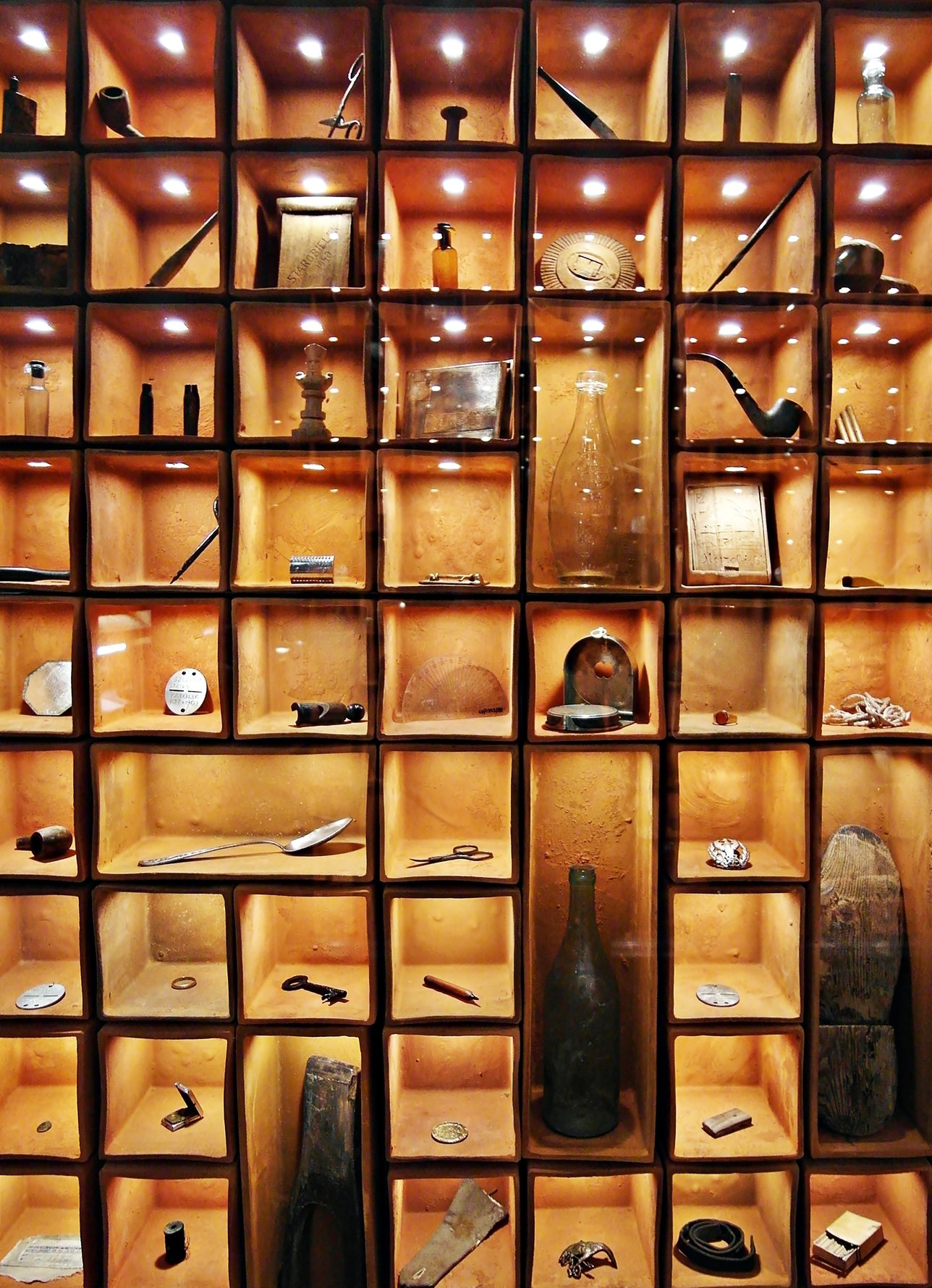
All That You Can’t Take With You
This problem disappears once you take the deliberately creaking and wheezing metal elevator down to the lower level. Down here there are no signs in any language; the objects on display simply speak for themselves. As soon as the elevator door opens and you step into the space, you are hit with an immense feeling of sadness and horror. The area is full of beautiful glass cabinets, filled with small terracotta boxes, each containing an item found during the exhumation of graves at Katyń, Kharkov, Mednoye and Bykivnia. The light reflecting off the terracotta boxes gives the whole room a mysterious golden glow and the overall impression reminds one of Joseph Cornell's intimate box constructions turned into a giant art installation.
The found items range from the simplest and most trivial things, like a button or a coin, through to personal belongings like spectacles, cutlery, dog tags, pipes, buckles, carved chess pieces and items which must have held a special meaning to their murdered owners; rosary beads, signet rings, watches and items to remind them of home. Interestingly, the implication is that the executioners did not seem to bother with systematically collecting belongings and personal effects from their victims; they were simply shot and thrown into the graves en masse. In total, there are over 5,500 of those small finds on display, yet amongst the vast number of objects certain individual items manage to strike a certain chord and resonate with the viewer, for example a fading "glamour" photo printed on a small piece of glass features a pretty, smiling girl lying on a sunny beach, the thought of this carefree image, with its sense of a normal, everyday and joyful life just lying in the damp forest earth, buried amongst 1000's of rotting corpses certainly set our minds wandering. Around the edges of this lower level space are also a few larger cabinets containing discoloured, almost mummified, coats, uniforms, army caps and boots.
Either looking a bit dazed or a bit lost, a guide points into the distance and informs us that the exit is over there. The small room by the exit door still contains a number of small screens which randomly flash up photos and names of the murdered, some images are simple head and shoulder symbols to represent those who were unidentified, unrecorded or remain undiscovered.
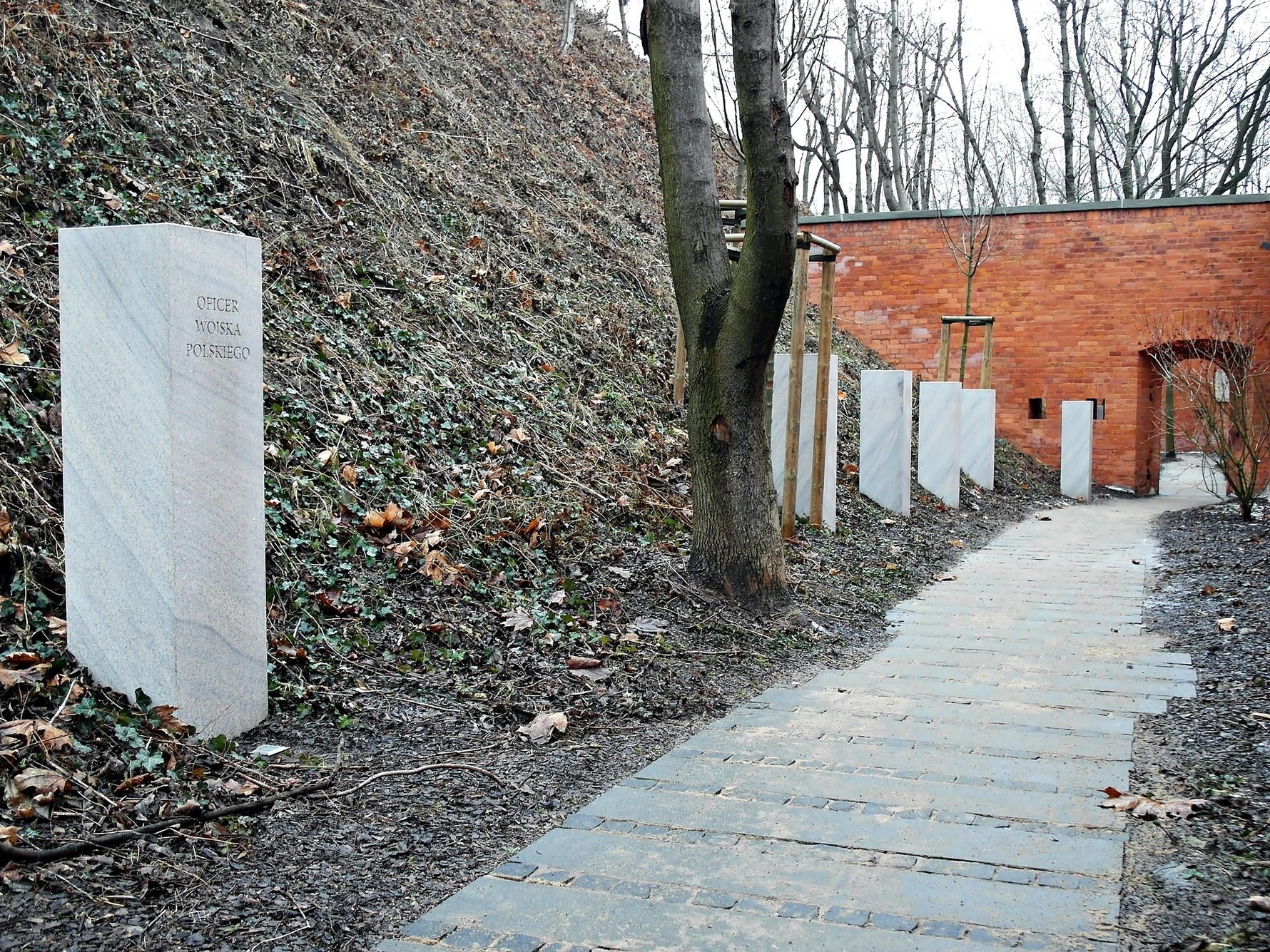
The Avenue of the Absent
Just when you thought the exit door would take you out into the daylight and fresh air.... it doesn't. First you have to take a short walk through a dark tunnel which leads you onto the next part of the museum’s outdoor installation. Named 'The Avenue of the Absent', the concept is a sombre and thoughtful path which follows part of the Citadel’s fortified brick wall on one side and features a high earth embankment on the other. The steep embankment symbolises the earth of the mass graves and also cuts out any views of distant surroundings and buildings, allowing for a contemplative stroll along the trail. Tall marble plinths engraved with the occupations of the dead stand upright in the earth at regular intervals and also serve to remind us that members of the officer class and military personnel were not the only victims of the massacres. Keep your eye on the surrounding wall which also features a few debossed symbols and images
The trail leads us to the 'Katyń Epitaph', an enclosed tomb-like structure built into the fortified wall. It contains steel plates embossed with the names of all the known dead. A blank plate at the end of the chamber is to the memory of unidentified victims.
Opposite the Epitaph a steep and imposing staircase cuts through the earthy embankment. The staircase is split in half by a narrow rivulet of running water which runs constantly towards the Epitaph. The running water represents the work of all those who struggled to uncover the truth about Katyń and the continuation of keeping this tragic story alive. At the top of the staircase looms the huge oak cross which we passed upon entering the grounds.
We would certainly recommend this poignant museum with its brilliantly conceived vision, not only inside the museum but also regarding the exceptionally well designed use of the surrounding grounds.
At the official opening ceremony on 17th September 2015, Poland's President Andrzej Duda said the following:
"The Katyń Museum is a site, along with the Warsaw Uprising Museum, that I think will become a place of national pilgrimage and also of educational pilgrimage. I am confident that it will be visited and that it will be popular, that many young people in our country will say: there are two places in Warsaw that one must see to get a deeper understanding of Poland, The Warsaw Uprising Museum, and the Katyń Museum".
Here's hoping that in the near future the museum does something about introducing some form of English language guide or signage in order to allow visitors and tourists from abroad, with no knowledge of the Polish language, to also gain a deeper understanding of Poland and this key event in its history.


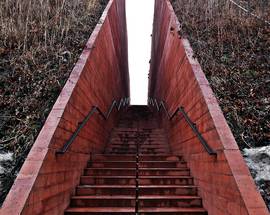

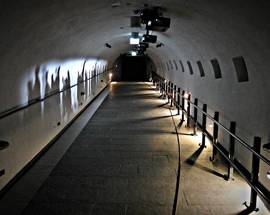

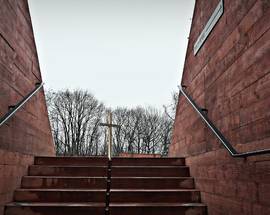



Comments